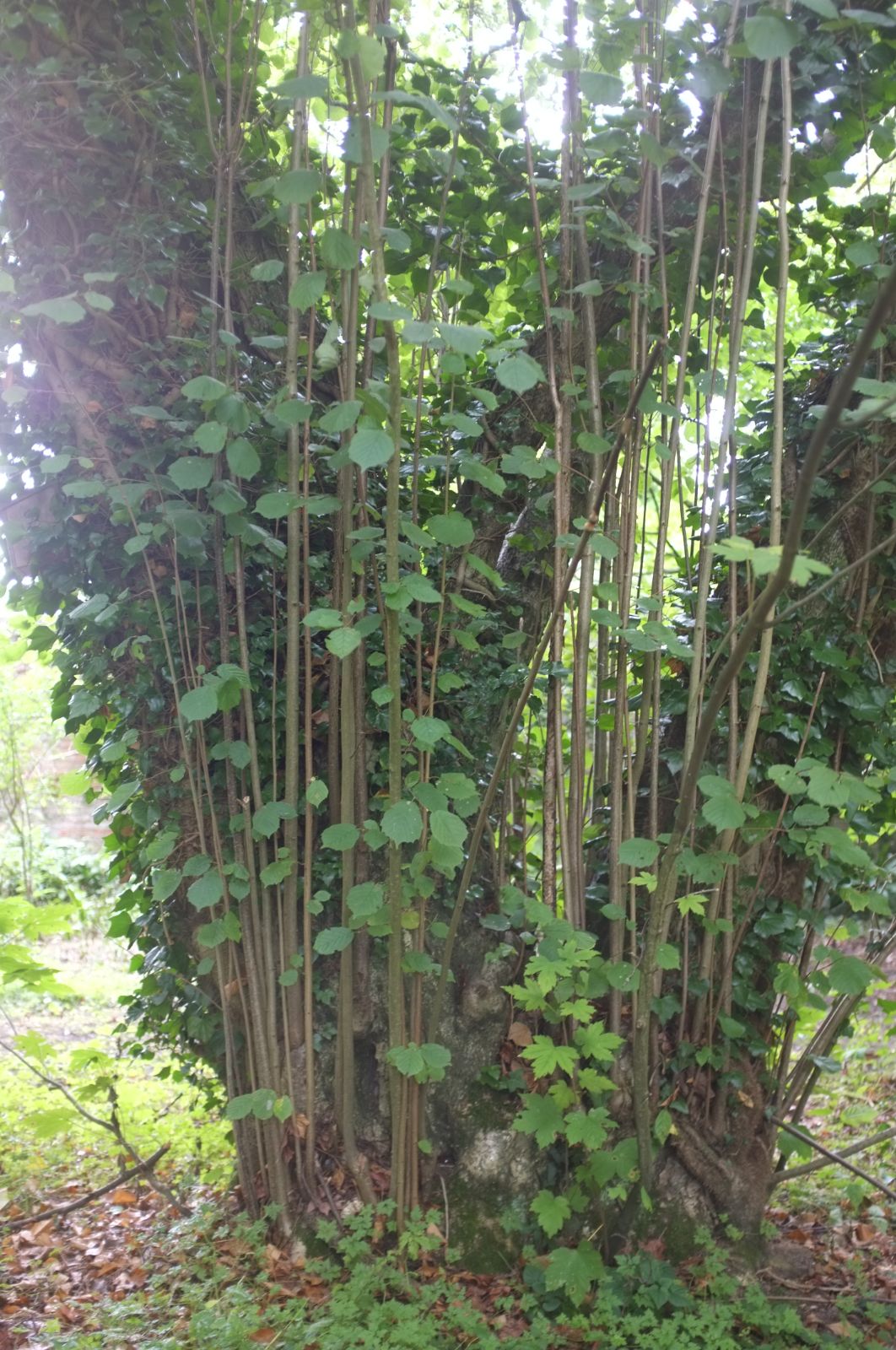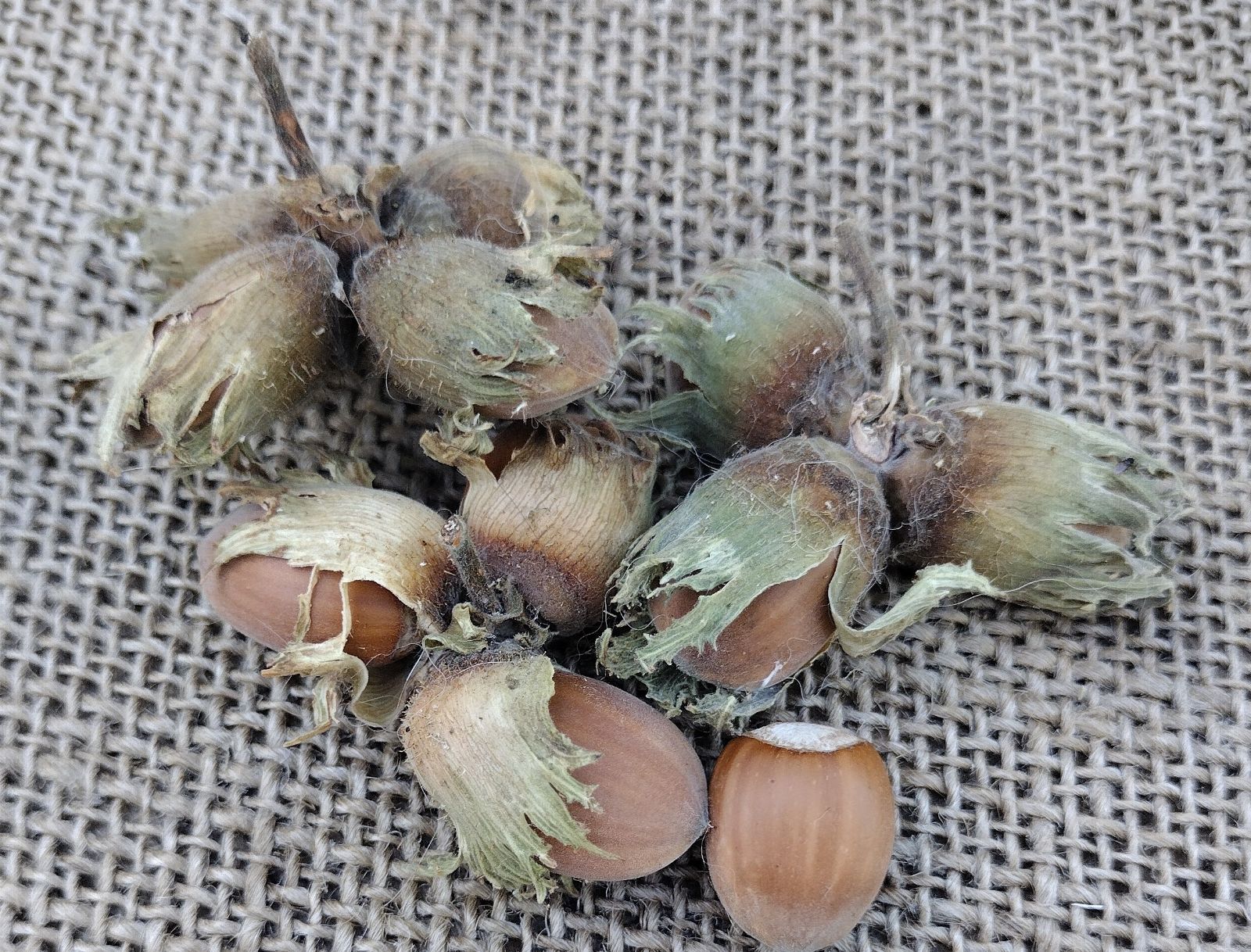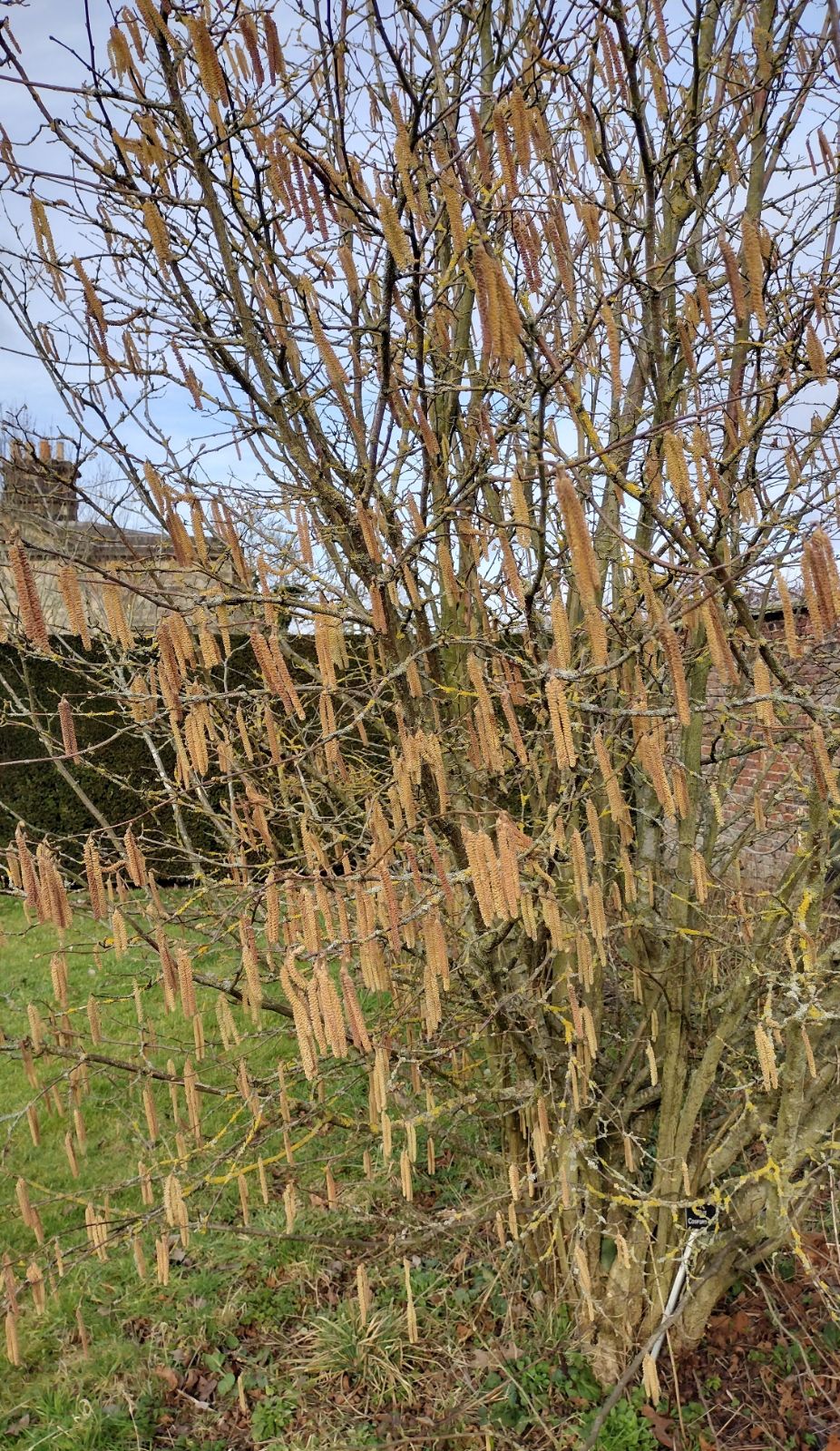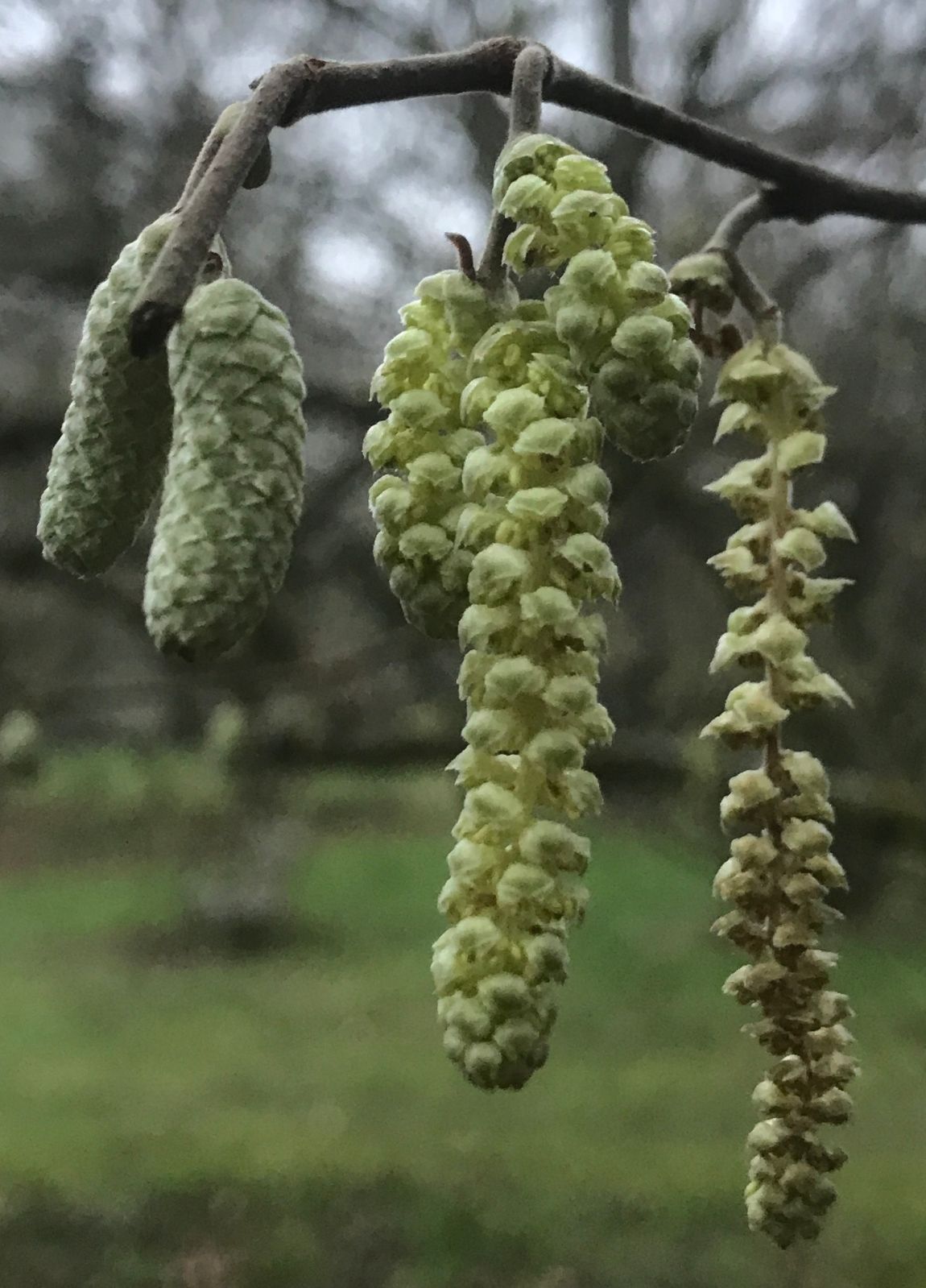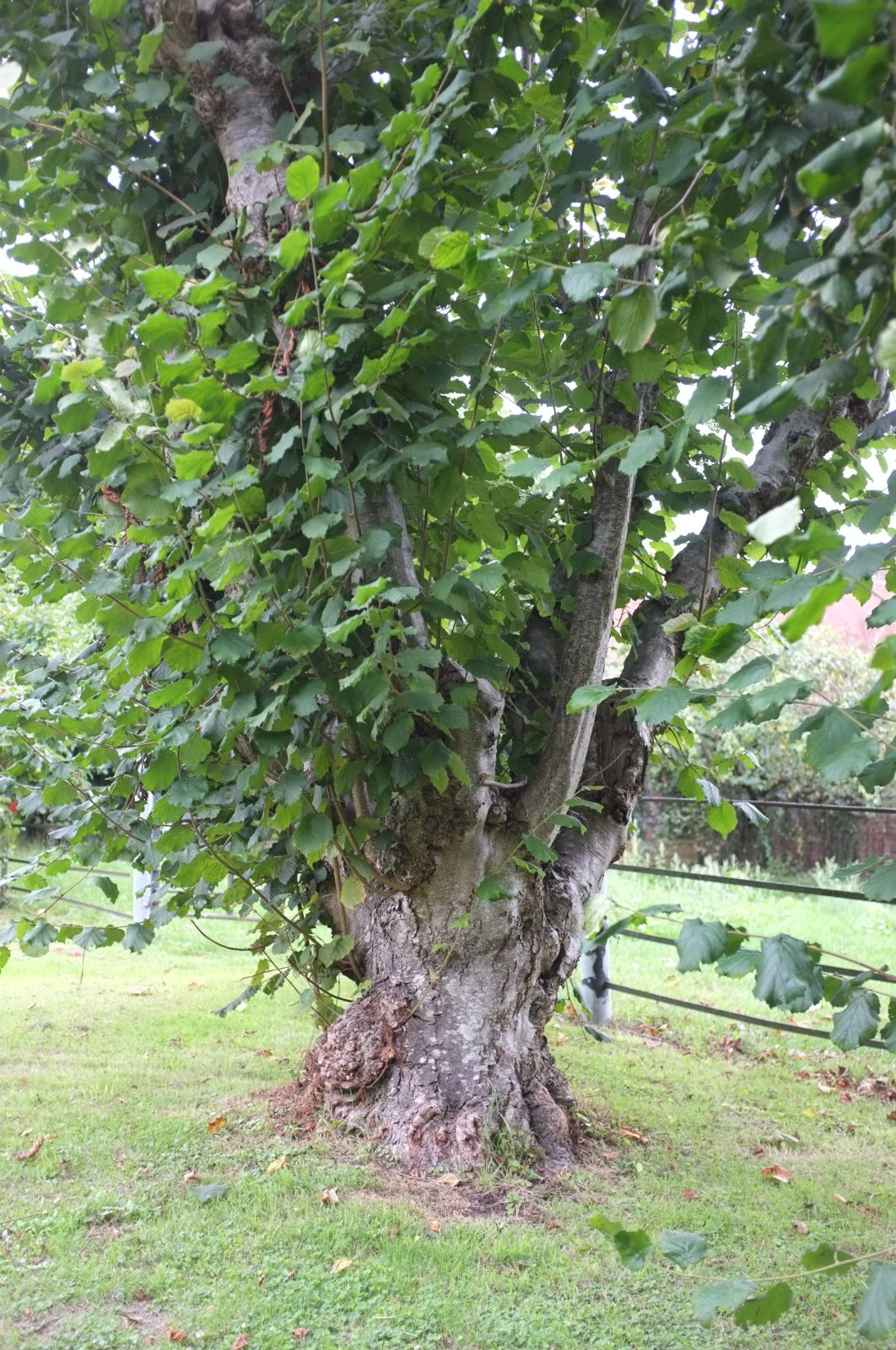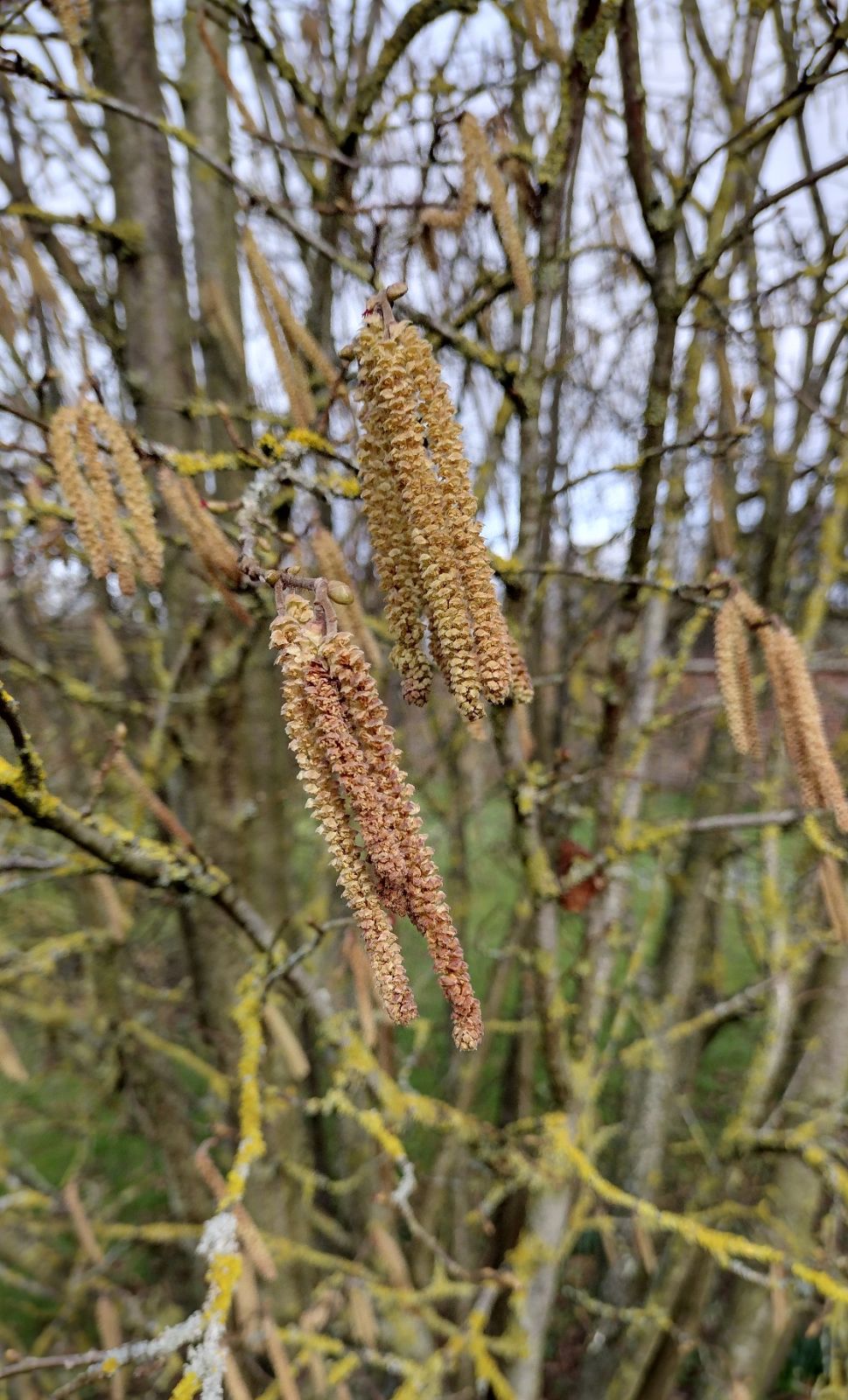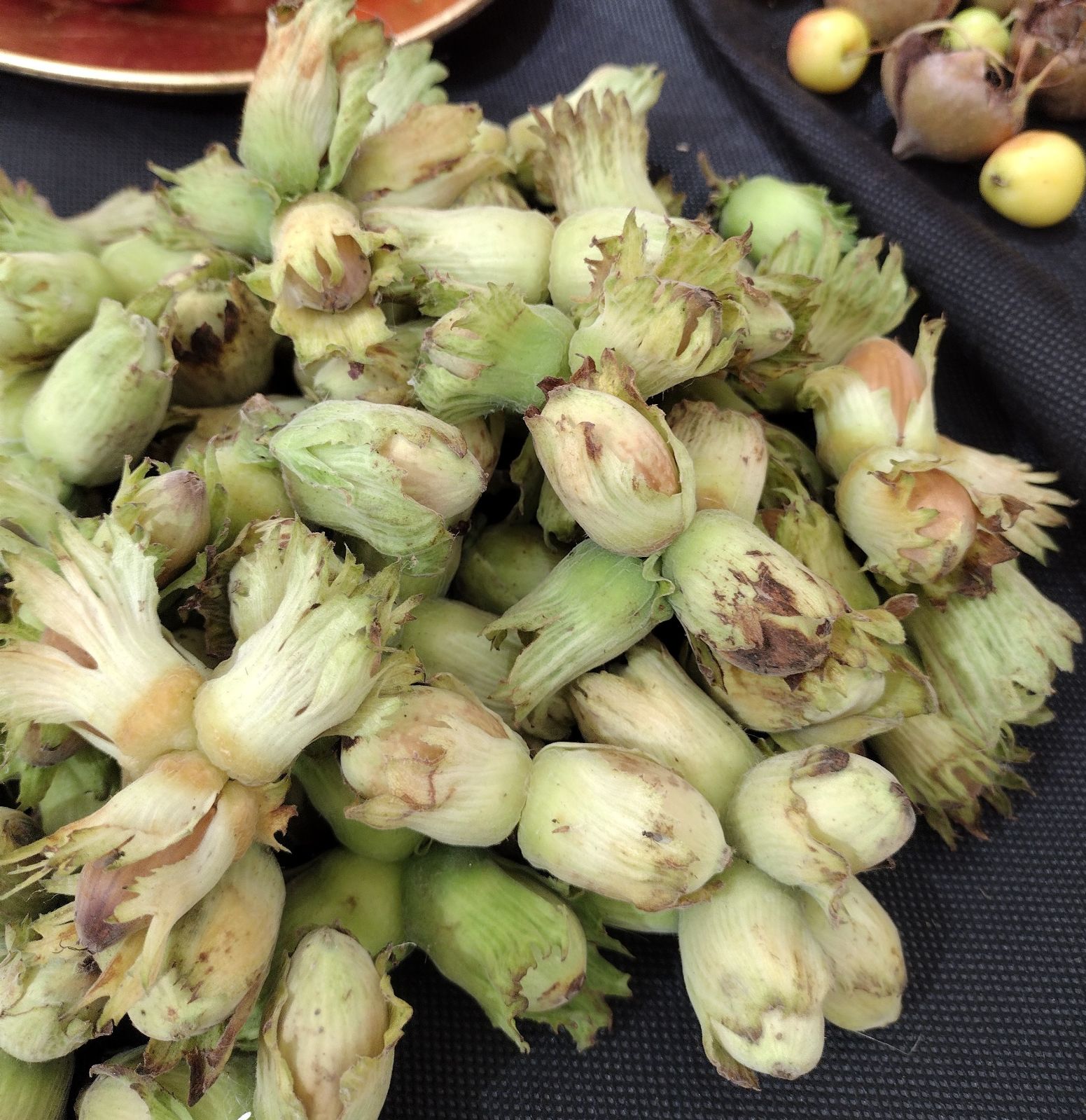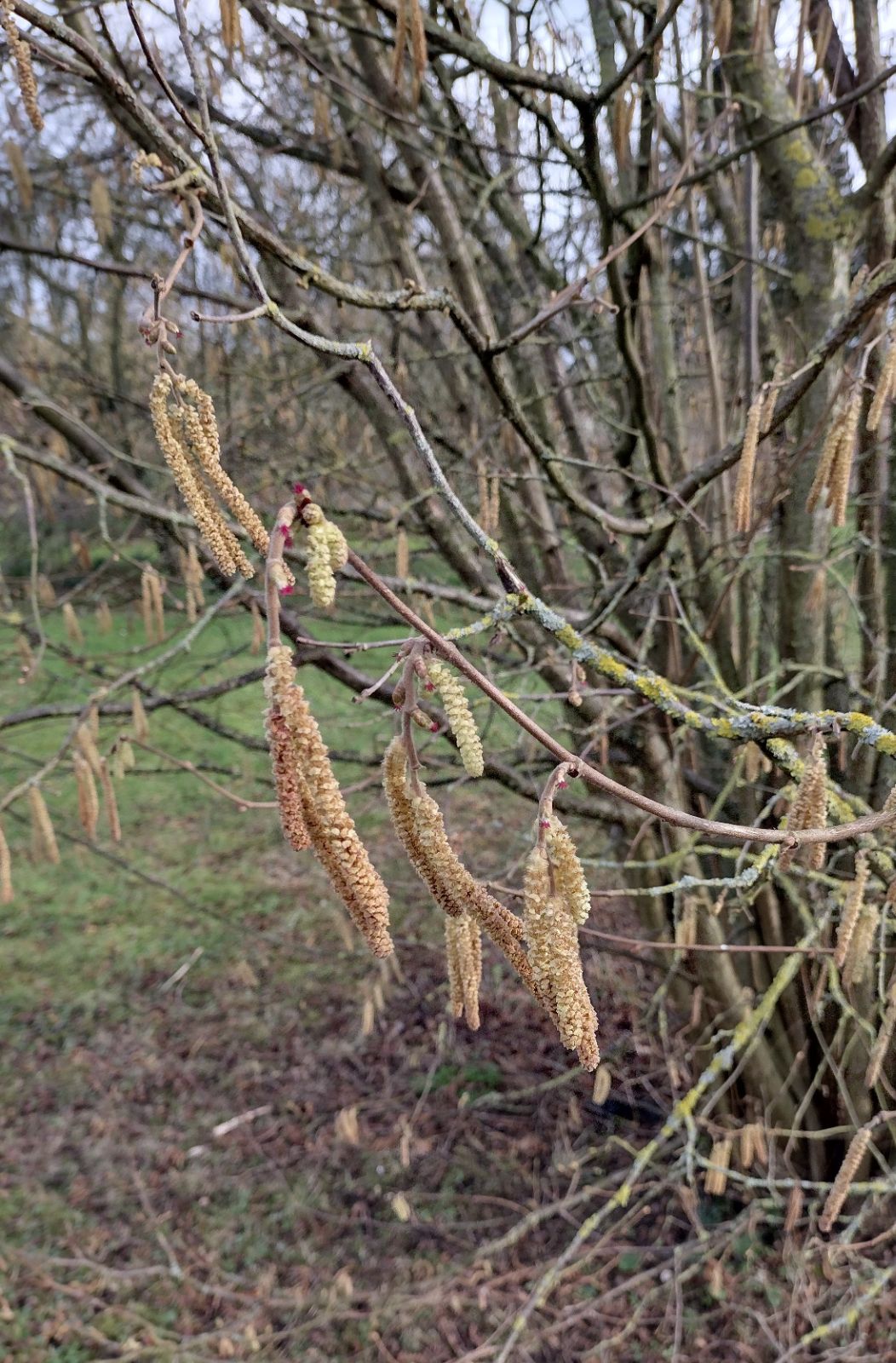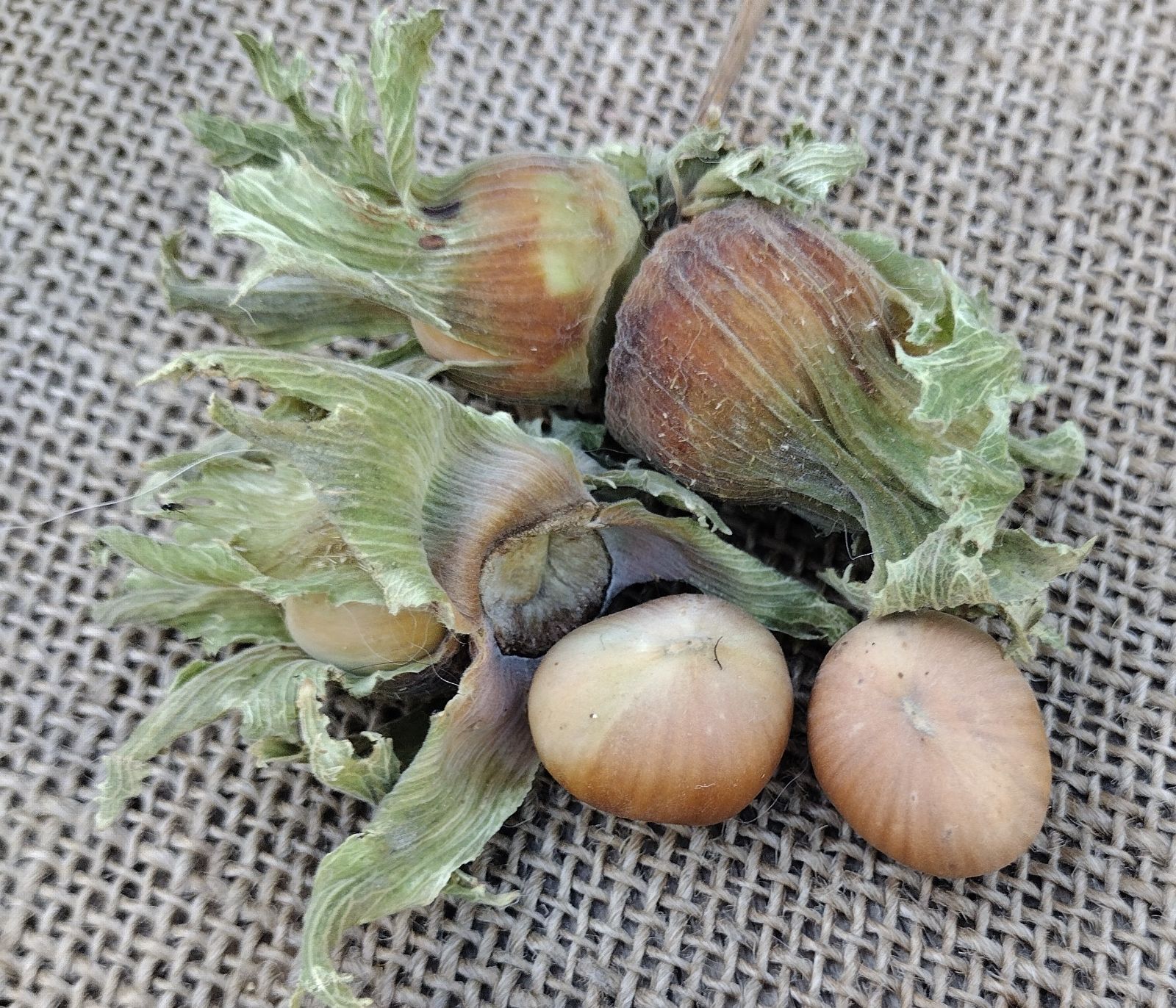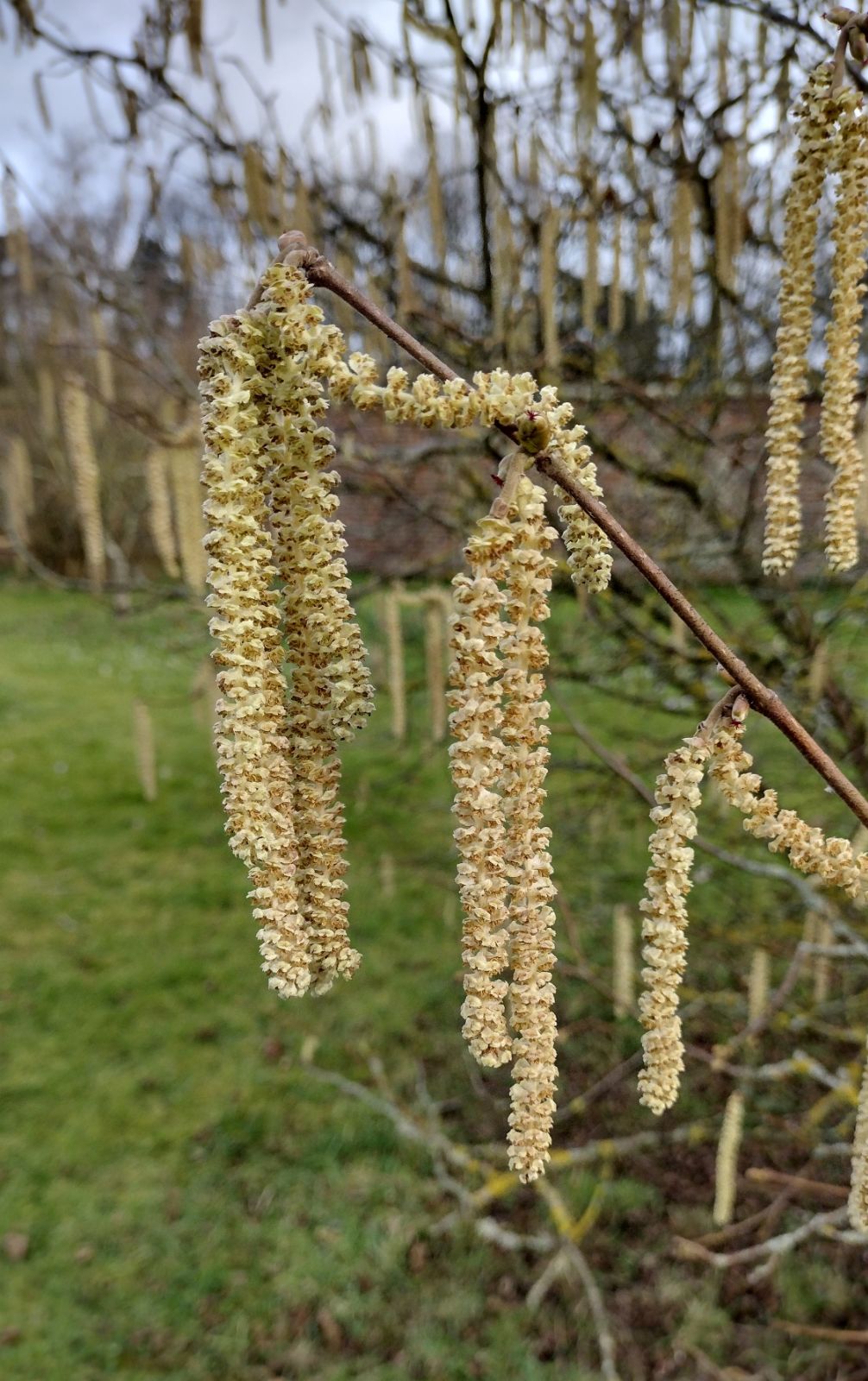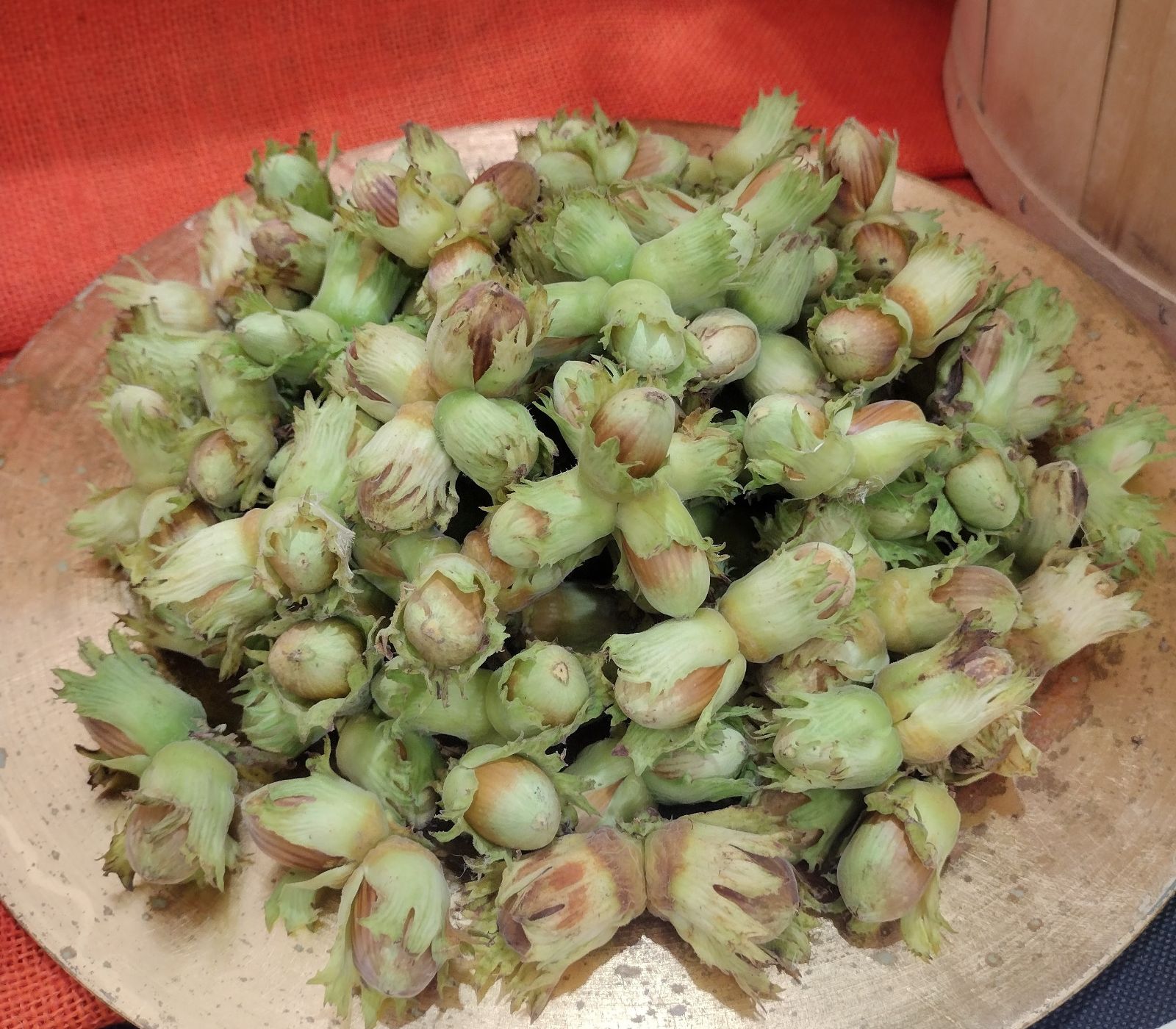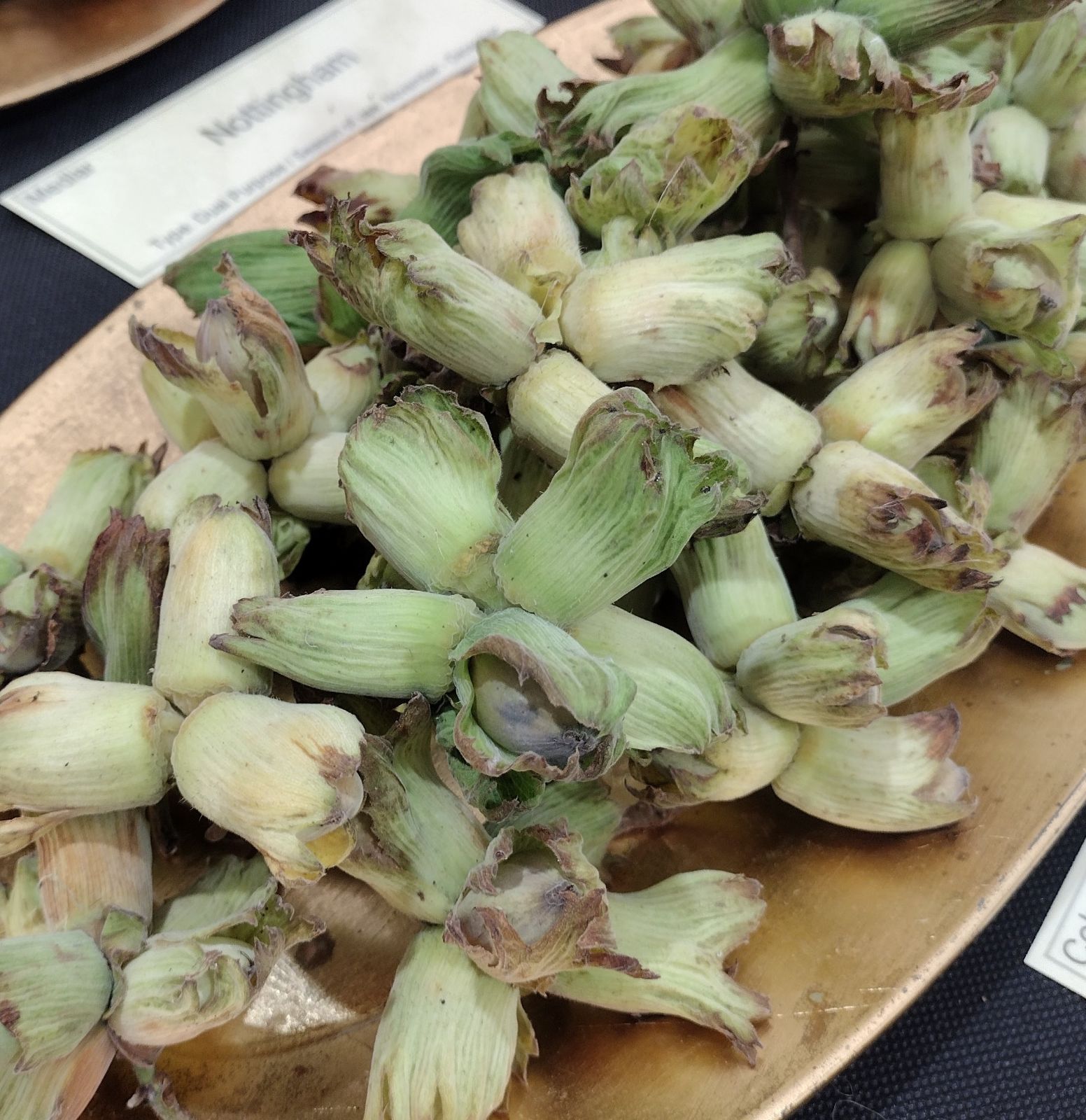Corylus avellana × maxima
Sponsor
Kindly sponsored by
Kent Men of The Trees
Credits
Owen Johnson & Richard Moore (2023)
Recommended citation
Johnson, O. & Moore, R. (2023), 'Corylus avellana × maxima' from the website Trees and Shrubs Online (treesandshrubsonline.
Genus
Common Names
- European fruiting hazel
- Cobnut
- Filbert
- Zellernuss
- Avelline
Infraspecifics
- 'Barcelona'
- 'Butler'
- 'Camponica'
- 'Casina'
- 'Clark'
- 'Corabel'
- 'Cosford'
- 'Craig'
- 'Daviana'
- 'Delta'
- 'Dorris'
- 'EMOA 1'
- 'Ennis'
- 'Epsilon'
- 'Eta'
- 'Felix'
- 'Feriale'
- 'Foşa'
- 'Gamma'
- 'Garibaldi'
- 'Gasaway'
- 'Gem'
- 'Grifoli'
- 'Gunslebert'
- 'Gustav's Zeller'
- 'Hall's Giant'
- 'Hunterdon'
- 'Impériale de Trébizonde'
- 'Jefferson'
- 'Jemtegaard 5'
- 'Kentish Cob'
- 'Lang Tidlig Zeller'
- 'Lewis'
- 'Lombardii'
- 'Louis Berger'
- 'McDonald'
- 'Monmouth'
- 'Morell'
- 'Mortarella'
- 'Negret'
- 'Nocchione'
- 'Öglunda'
- 'Palaz'
- 'Pauetet'
- 'Pearson's Prolific'
- 'Raritan'
- 'Ribet'
- 'Riccia di Talanico'
- 'Rotblättrige Zellernuss'
- 'Sacajawea'
- 'San Giovanni'
- 'Santiam'
- 'Segorbe'
- 'Somerset'
- 'Theta'
- 'Tokolyi Brownfield Cosford'
- 'Tombul'
- 'Tonda di Giffoni'
- 'Tonda Francescana'®
- 'Tonda Gentile della Langhe'
- 'Tonda Gentile Romana'
- 'Tonda Pacifica'
- 'Tonda Rossa'
- 'Tonollo'
- 'Webb's Prize Cob'
- 'Wepster'
- 'White Filbert'
- 'Willamette'
- 'Yamhill'
- 'York'
- 'Zeta'
Other taxa in genus
- Corylus americana
- Corylus americana × avellana
- Corylus avellana
- Corylus avellana × cornuta
- Corylus avellana × heterophylla
- Corylus avellana × sieboldiana
- Corylus avellana × sutchuenensis
- Corylus Badgersett Hybrids
- Corylus chinensis
- Corylus colchica
- Corylus colurna
- Corylus × colurnoides
- Corylus cornuta
- Corylus fargesii
- Corylus ferox
- Corylus 'Grand Traverse'
- Corylus heterophylla
- Corylus jacquemontii
- Corylus maxima
- Corylus 'Purple Haze'
- Corylus 'Rosita'
- Corylus 'Ruby'
- Corylus sieboldiana
- Corylus × spinescens
- Corylus sutchuenensis
- Corylus 'Te Terra Red'
- Corylus × vilmorinii
- Corylus yunnanensis
Hybrids bred for nut production in Europe and western Asia. Nuts with husks variably longer than the nut itself, but not clasping the nut; either deeply lobed or slightly constricted as a tube beyond the tip of the nut. Bark often dark grey. Habit often vigorous; leaves often slightly larger than in wild Corylus avellana.
USDA Hardiness Zone 5
RHS Hardiness Rating H6
Elsewhere in this account, for simplicity’s sake, the fruiting hazels of European origin which have been hybridised with American and Chinese Corylus species in the search for hardier or disease-resistant nut trees are treated as cultivars or representatives of C. avellana, the hazel which grows wild in abundance across much of Europe. Many of these European clones, however, have bracts which, unlike those of the wild species, can be significantly longer than the nut itself. The implication is that another, longer-husked species was involved in the breeding of many, if not most, of these trees – whose origins are generally too ancient for records to survive. This long-husked parent – whether or not it still exists as a wild tree – is universally known as C. maxima, and some authorities have attempted to separate the European fruiting hazels as cultivars either of C. avellana or of C. maxima, depending on bract length.
Again for simplicity’s sake, old European fruiting hazels are treated together within this section, as plants of possible hybrid origin. This means of organisation offers the incidental benefit of separating these ‘useful’ trees from those clones which have been selected for ornament, and which are known or might be assumed to have been straightforward mutants of wild hazels. In this account, ‘ornamental’ hazels can therefore all be found under Corylus avellana, with three exceptions. The red-leaved ‘Rotblättrige Zellernuss’ has enjoyed a dual role as a nut tree and an ornament, and gains mention in both lists. Two more purple hazels have long husks, and are customarily treated, as here, as representatives of C. maxima (‘Frühe van Frauendorf’ and ‘Purpurea’).
We have made no attempt to compile a comprehensive list of European fruiting hazels. As many as 739 cultivars are grown at Giresun in Turkey (Dirr 2009); the United States’ National Clonal Germplasm Repository at Corvallis, Oregon, holds at least 485 hazels (including species), while 48 selections are grown in the UK’s National Fruit Collection at Brogdale in Kent, in an orchard replanted in 2002 (Brogdale Collections 2023).
The hazelnut industry in Turkey and Europe continues to depend on various of the clones listed below. This was also the case in the Willamette Valley in Oregon, the traditional heartland of American hazelnut production, until Eastern Filbert Blight (EFB) reached this area in the 1960s (Muehlbauer, Capik & Molnar 2021). Nut-trees of more complex breeding, which are more reliably resistant to EFB than the old European clones, are now often used in their stead in the New World. Hazels of European origin have also been introduced to the far East, but the areas on which hazelnut production has become centred, in China’s Liaoning Province and in South Korea, are slightly too cold in winter for these clones to be successful; hybrids with the Asiatic Corylus heterophylla are now used here (Molnar 2011).
The etymology of the name ‘filbert’ probably derives from that of St Philibert of Jumièges or St Philibert of Toledo, whose feast-days (on the 20th or 25th and the 22nd August, respectively) fall at the time when hazel-nuts ripen in southern Europe (Holstein, Tamer & Weigend 2018). ‘Avelline’ derives from the Latin ‘nux Avellina’ – a nut from Avella Vecchia or Avellino (both in southern Italy) (Jacobson 1996). ‘Cobnut’ derives from one of the many meanings of the English word ‘cob’: rounded in shape (Oxford English Dictionary 2023). The German zellernuss commemorates the monastery of Zell near Würzburg, where fruiting hazels have long been cultivated (Unser Garten 2023).
'Barcelona'
Synonyms / alternative names
Corylus avellana × maxima 'Fertile de Coutard'
A vigorous old cutlivar of Spanish origin, resistant to bud mites, with large nuts carried in moderate abundance (Crawford 2016). ‘Barcelona’ used to be the most popular hazel in the orchards of the Willamette Valley, Oregon, and has some resistance to Eastern Filbert Blight (Hatch 2021–2022; Molnar 2011).
'Butler'
Synonyms / alternative names
Corylus maxima 'Butler'
A vigorous and disease-resistant heavy-cropper developed in the United States and now cultivated in France and in Kent (UK) (Crawford 2016).
'Camponica'
An Italian selection recommended for its large nuts and heavy cropping (Crawford 2016).
'Casina'
A vigorous hazel bred in northern Spain; the nuts are small but borne profusely. This is a long-husked variant (Crawford 2016).
'Clark'
A hazel bred from ‘Willamette’ in the western United States, with some resistance to Eastern Filbert Blight (Muehlbauer, Capik & Molnar 2021).
'Corabel'
A cultivar of recent French breeding, combining regular heavy cropping with large nuts of excellent flavour; late to come into leaf (Crawford 2016).
'Cosford'
Synonyms / alternative names
Corylus 'Cosford Cob'
An old English selection (by 1829), whose sweet medium-sized nuts are borne rather sparingly; late to leaf in spring (Crawford 2016; Holstein, Tamer & Weigend 2018).
'Craig'
A selection made for its hardiness by Jack Gellatly in British Columbia in the mid twentieth century; the parent of some ‘Filazel’ hybrids (Molnar 2011).
'Daviana'
Synonyms / alternative names
Corylus 'Des Anglais'
Corylus 'Duchess of Edinburgh'
An old American selection which is still useful as a pollinator for an orchard of other clones; susceptible to bud mites and not high-yielding (Crawford 2016).
'Delta'
A hazel bred by Oregon State University for its resistance to Eastern Filbert Blight and to bud mites, with a compact habit. Its nuts are small but it is a good pollinator for other clones (Hatch 2021–2022; Crawford 2016).
'Dorris'
Recently bred in the United States for its resistance to Eastern Filbert Blight; a spreading plant with medium-sized nuts of excellent quality (Crawford 2016).
'EMOA 1'
‘EMOA 1’ (and 2 and 3) have been bred in the Netherlands for their disease resistance in a northern climate and abundant nut production (Crawford 2016).
'Ennis'
Synonyms / alternative names
Corylus maxima 'Ennis'
An American selection with very large nuts abundantly borne; late into leaf and resistant to bud mites but vulnerable to grey mould (Botrytis cinerea) (Crawford 2016).
'Epsilon'
A compact hazel bred at Oregon State University for its resistance to Eastern Filbert Blight; the nuts are small but this is a good pollinator for other clones (Hatch 2021–2022; Crawford 2016).
'Eta'
Bred at Oregon State University for its resistance to Eastern Filbert Blight; a hazel of upright habit and good pollinator for other clones, though low-yielding itself (Hatch 2021–2022; Crawford 2016).
'Felix'
Recently bred in the United States for its resistance to Eastern Filbert Blight; an upright plant whose medium-sized nuts are not produced abundantly, but a good pollinator for other clones (Crawford 2016).
'Feriale'
A recent hybrid of ‘Butler’ bred in France for its large, sweet nuts; early-flowering (Crawford 2016).
'Foşa'
An old Turkish selection, still much used for nut production in that country but little known in the west (Muehlbauer, Capik & Molnar 2021). A bush in the hazel collection at the Royal Botanic Gardens, Kew, collected in 1933 by E.F. Balls (most likely in Turkey) and labelled ‘Focha’ in 2022, presumably represents this clone.
'Gamma'
A vigorous selection bred at Oregon State University for its resistance to Eastern Filbert Blight; the nuts are small but this is a good pollinator for other clones (Hatch 2021–2022; Crawford 2016).
'Garibaldi'
An old hazel which is still widely sold in Europe; large leaves and thin-shelled nuts (Hatch 2021–2022).
'Gasaway'
An old clone with good resistance to Eastern Filbert Blight (EFB), which was used as a pollinator in the orchards of Oregon’s Willamette Valley. ‘Gasaway’ holds an important place in the breeding of modern EFB-resistant clones (Koma et al. 2021).
'Gem'
A vigorous American selection; very large nuts borne rather sparsely (Crawford 2016).
'Grifoli'
A Spanish selection; small rather oblong nuts abundantly borne (Crawford 2016).
'Gunslebert'
An old German selection whose moderate-sized nuts are not produced abundantly, but have a rich flavour. It is sometimes grown commercially in Kent (Crawford 2016).
'Gustav's Zeller'
A vigorous German selection with small, rather-thick shelled nuts; not a heavy cropper (Crawford 2016).
'Hall's Giant'
Synonyms / alternative names
'Géant de Halle’
'Halle Giant'
'Halle'sche Riesennuss'
'Merveille de Bollwiller'
A vigorous old German clone; large nuts with golden-brown kernels. Very resistant to bud-mites but not high-yeilding (Reich 2021; Crawford 2016; note that on this page in the original edition the comments relate to the previous cultivar).
'Hunterdon'
A particularly hardy clone resistant to Eastern Filbert Blight, recommended for use in the north-eastern United States (Muehlbauer, Capik & Molnar 2021).
'Impériale de Trébizonde'
An old Turkish selection (Lappen Tree Nurseries 2023) with big nuts, which is still in commerce (Holstein, Tamer & Weigend 2018).
'Jefferson'
A recent American selection with good resistance to Eastern Filbert Blight; large nuts produced abundantly (Crawford 2016; note that on this page in the original edition the comments relate to the previous cultivar).
'Jemtegaard 5'
A vigorous American selection; low-yielding and used as a pollinator (Crawford 2016; note that on this page in the original edition the comments relate to the previous cultivar).
'Kentish Cob'
Synonyms / alternative names
'Grote Lambertsnoot'
'Longue d'Espagne'
'Lambert's Filbert'
'Kent Cob'
Large nuts of excellent flavour, produced rather sparingly and held in long husks which generally remain attached to the fruit when they fall. A vigorous hazel which is the principal fruiting selection in Kent (and in Germany) (Crawford 2016; note that on this page in the original edition the comments relate to the previous cultivar).
'Lang Tidlig Zeller'
Synonyms / alternative names
'Lange Landsberger'
An old German clone with a rather leggy habit; nuts rather small and thick-shelled (Crawford 2016).
'Lewis'
A modern American clone bred from ‘Willamette’ and with some resistance to Eastern Filbert Blight; the nuts are borne abundantly over a long period. Planted commercially in France (Muehlbauer, Capik & Molnar 2021; Crawford 2016).
'Lombardii'
An old Italian clone which is still available around Europe (Royal Horticultural Society 2023).
'Louis Berger'
Synonyms / alternative names
'Berger'
A late-ripening selection which is still commercially available (Willem van Herreweghe 2023).
'McDonald'
A recent American selection, resistant to Eastern Filbert Blight. An open-crowned tree bearing heavy crops of large nuts (Crawford 2016).
'Monmouth'
A particularly hardy clone resistant to Eastern Filbert Blight, recommended for use in the north-eastern United States (Muehlbauer, Capik & Molnar 2021).
'Morell'
An old Spanish clone (Crawford 2016), which is used commercially in Chile (Bastias & Grau 2005).
'Mortarella'
An Italian clone with abundant large nuts; resistant to bud mites (Crawford 2016).
'Negret'
The principal commercial cultivar in Spain (Muehlbauer, Capik & Molnar 2021); a small bush which produces lots of medium-sized thin-shelled nuts, but is susceptible to bud mites (Crawford 2016).
'Nocchione'
Synonyms / alternative names
'Montebello'
'Siciliana'
An Italian form recommended as a pollinator (Crawford 2016). Unusually among Corylus, this clone is also partially self-fertile (Mehlenbacher & Smith 1991).
'Öglunda'
A hardy, Scandinavian selection which is represented at the Linnaeus Garden at Uppsala in central Sweden (Royal Botanic Garden Edinburgh 2023).
'Palaz'
An old Turkish selection, still much used for nut production in that country but little known in the west (Muehlbauer, Capik & Molnar 2021).
'Pauetet'
A vigorous and heavy-yielding Spanish clone with rather small nuts, which is also used commercially in France (Crawford 2016).
'Pearson's Prolific'
Synonyms / alternative names
'Nottingham Cob'
'Nottingham Prolific'
'Nottingham'
A compact old English clone, with a moderate crob of medium-sized but thick-shelled nuts (Crawford 2016).
'Raritan'
A particularly hardy clone resistant to Eastern Filbert Blight, recommended for use in the north-eastern United States (Muehlbauer, Capik & Molnar 2021).
'Ribet'
A vigorous Spanish selection with good crops of medium-sized nuts (Crawford 2016).
'Riccia di Talanico'
An Italian clone with large, thin-shelled nuts carried quite profusely; early into leaf (Crawford 2016).
'Rotblättrige Zellernuss'
Common Names
Red Filbert
Blood Hazel
An old German plant with red to purple younger leaves; the large nuts also have red husks. A cultivar planted both for nut production and as a garden feature; described more fully as an ornamental cultivar under Corylus avellana.
'Sacajawea'
A recent American selection with good resistant to Eastern Filbert Blight; a compact plant with medium-sized nuts of excellent quality (Crawford 2016). The name honours the native Shoshone woman who helped guide Meriwether Lewis and William Clark on their expedition across North America (Mehlenbacher & Smith 2008).
'San Giovanni'
An Italian selection with abundant crops of medium-sized, slender nuts (Crawford 2016).
'Santiam'
A clone bred for its resistance to Eastern Filbert Blight at Oregon State University, and released in 2005; the nuts are of moderate quality (Crawford 2016); Mehlenbacher et al. 2007).
'Segorbe'
An old French form with a heavy crop of large nuts; a vigorous plant but susceptible to bud mites (Crawford 2016).
'Somerset'
A particularly hardy clone resistant to Eastern Filbert Blight, bred by Rutgers University in New Jersey and recommended for use in the eastern United States (Muehlbauer, Capik & Molnar 2021).
'Theta'
A clone bred at Oregon State University for its resistance to Eastern Filbert Blight; its nuts are small and sparingly produced (Crawford 2016).
'Tokolyi Brownfield Cosford'
An Australian selection whose medium-sized nuts are produced over a long period (Baldwin, Gilchrist & Snare 2005; (Wychwood Tasmania 2023).
'Tombul'
An old Turkish selection, still much used for nut production in that country but little known in the west (Muehlbauer, Capik & Molnar 2021). Unusually among Corylus, this clone is partially self-fertile (Mehlenbacher & Smith 1991).
'Tonda di Giffoni'
A rather small-growing Italian selection whose large, thin-shelled nuts are produced in good numbers (Crawford 2016). ‘Tonda di Giffoni’ is notably resistant to most hazel diseases, include Eastern Filbert Blight to a degree (Hatch 2021–2022).
'Tonda Francescana'®
Synonyms / alternative names
'Nocciotonda'
A rather upright selection which produces plenty of nuts from an early age; bred at the University of Perugia in the 1980s as a hybrid of ‘Tonda Gentile Romana’ and ‘Tonda di Giffoni’ and released in 2012 (Vivai Nocola di Nicola Marco 2023).
'Tonda Gentile della Langhe'
An old Italian selection, vigorous but susceptible to bud mites. The medium-sized nuts are of excellent quality and produced in moderate numbers (Crawford 2016).
'Tonda Gentile Romana'
An Italian clone which is very resistant to bud mites and produces large quantities of large, round nuts (Crawford 2016).
'Tonda Pacifica'
A clone bred at Oregon State University in 1981 as a hybrid of ‘Tonda Gentile delle Langhe’; compact in habit and resistant to Eastern Filbert Blight (Mehlenbacher et al. 2011).
'Tonda Rossa'
An Italian clone with flavourful nuts, not borne abundantly (Crawford 2016).
'Tonollo'
A selection bred in Australia (Baldwin, Gilchrist & Snare 2005).
'Webb's Prize Cob'
Synonyms / alternative names
Corylus maxima 'Webb's Prize Cob'
An old English selection which remains the most popular fruiting hazel in the UK; a vigorous tree with very big nuts in large clusters (Crawford 2016; Royal Horticultural Society 2023; Hatch 2021–2022). It is unusual in being partially self-fertile (Royal Horticultural Society 2023).
'Wepster'
A recent American selection, highly resistant to Eastern Filbert Blight; a vigorous upright plant with good crops of small nuts (Crawford 2016).
'White Filbert'
Synonyms / alternative names
'Avelline Blanche'
'Spanish White'
'White Aveline'
'White Spanish Filbert'
An old French selection bearing heavy crops of particularly thin-shelled nuts; resistant to bud mites (Crawford 2016).
'Willamette'
Synonyms / alternative names
Corylus maxima 'Willamette'
A traditional hazel of the orchards of Oregon’s Willamette Valley, but not resistant to Eastern Filbert Blight (EFB) which reached this area in the 1960s (Hatch 2021–2022; Muehlbauer, Capik & Molnar 2021). A vigorous and spreading tree, consistently with heavy crops of medium-sized richly-flavoured nuts, which is still recommended for planting in Europe and other areas free from EFB (Crawford 2016).
'Yamhill'
A recent American clone with good resistance to Eastern Filbert Blight; a small plant with a good crop of small, rounded nuts (Crawford 2016).
'York'
Selected recently in the United States for its resistance to Eastern Filbert Blight; producing moderate crops of medium-sized nuts but recommended mainly as a pollinator (Crawford 2016).
'Zeta'
A recent American clone with a good degree of resistance to Eastern Filbert Blight; recommended as a pollinator (Crawford 2016).

